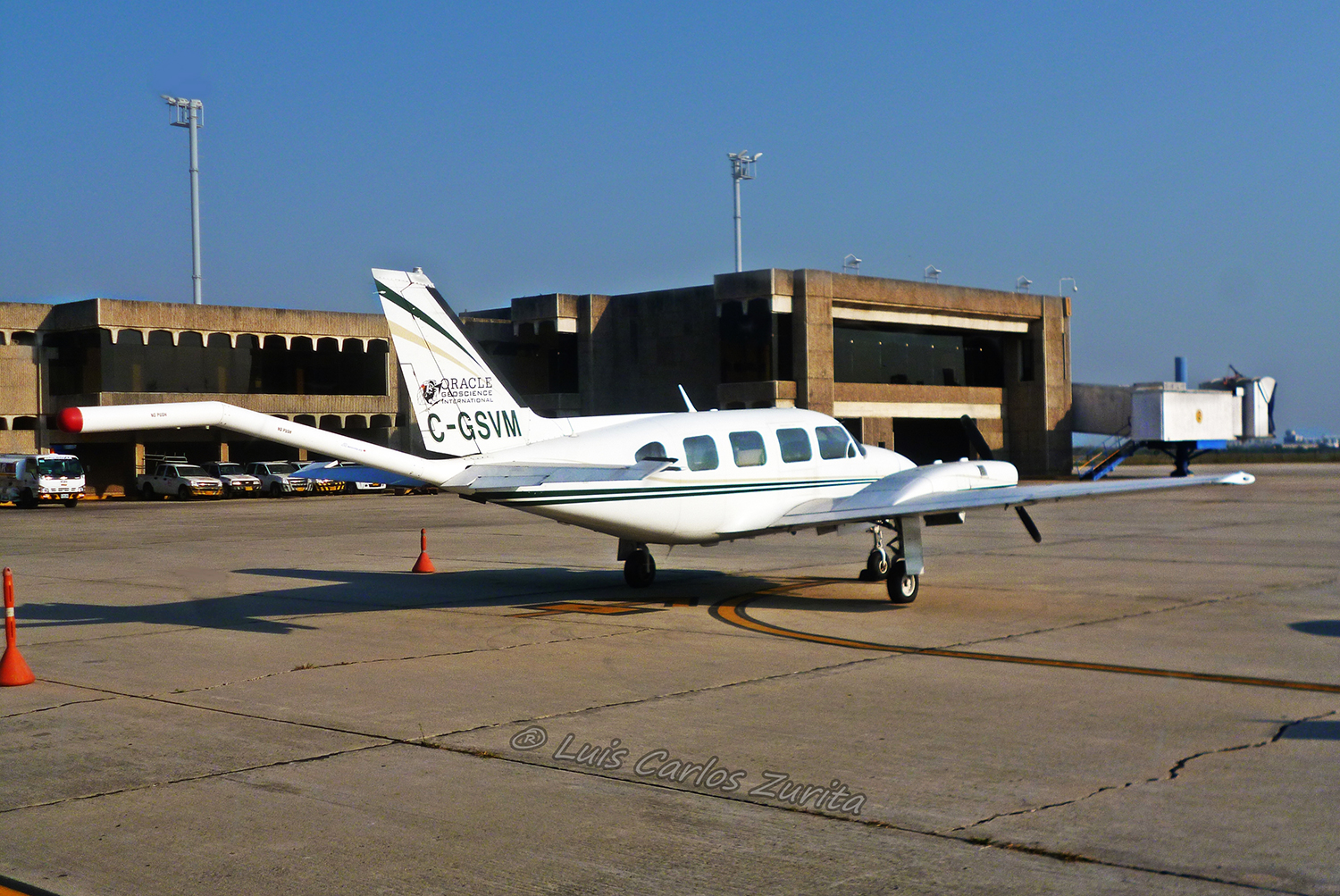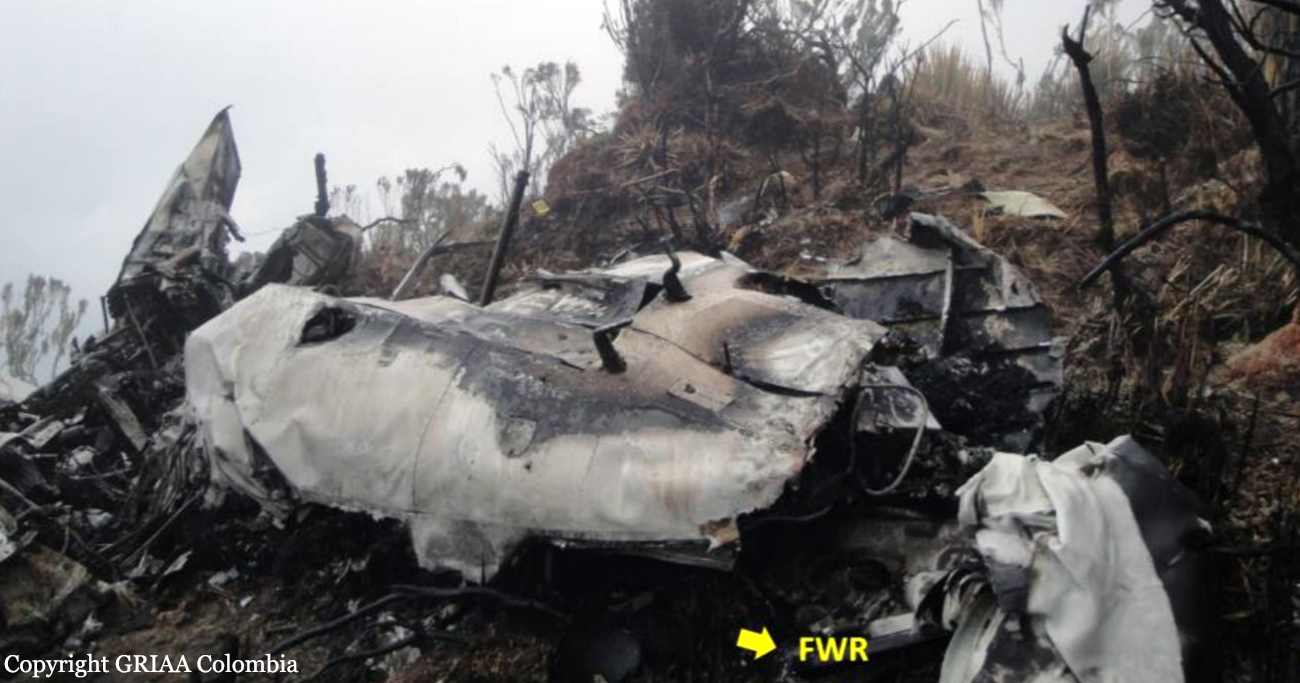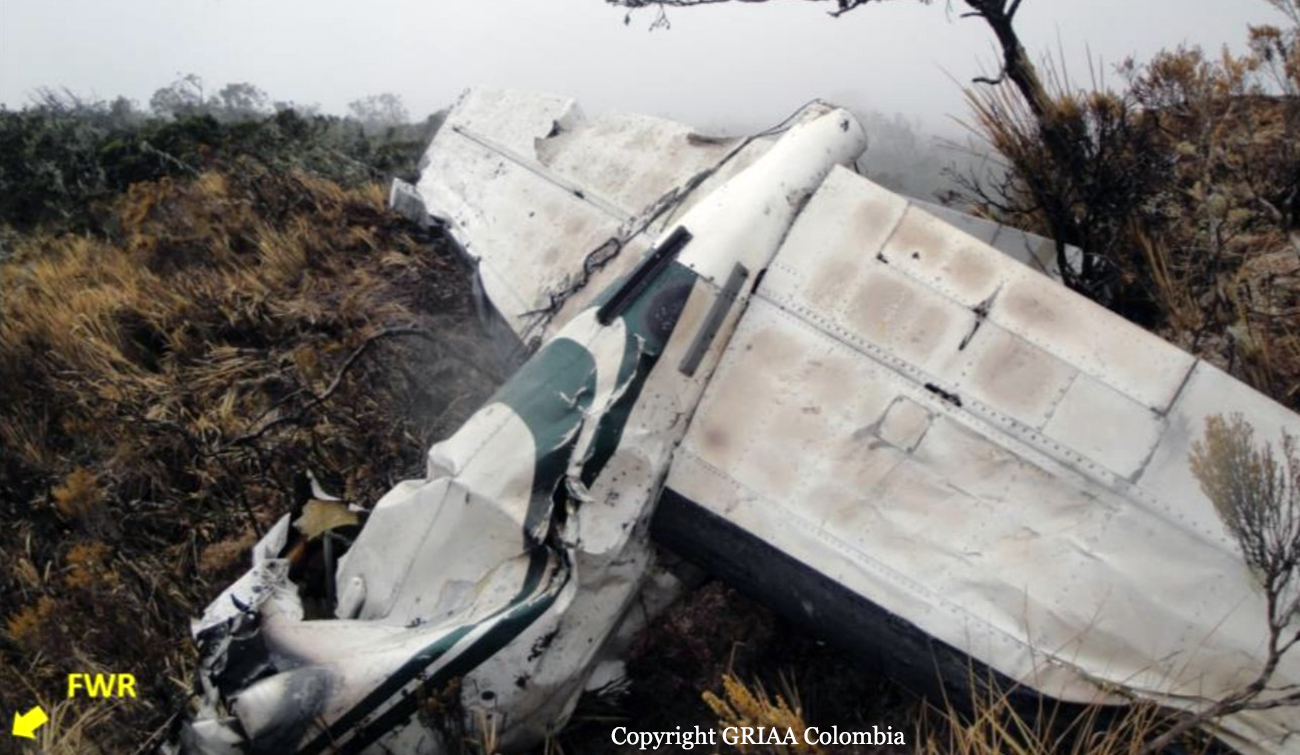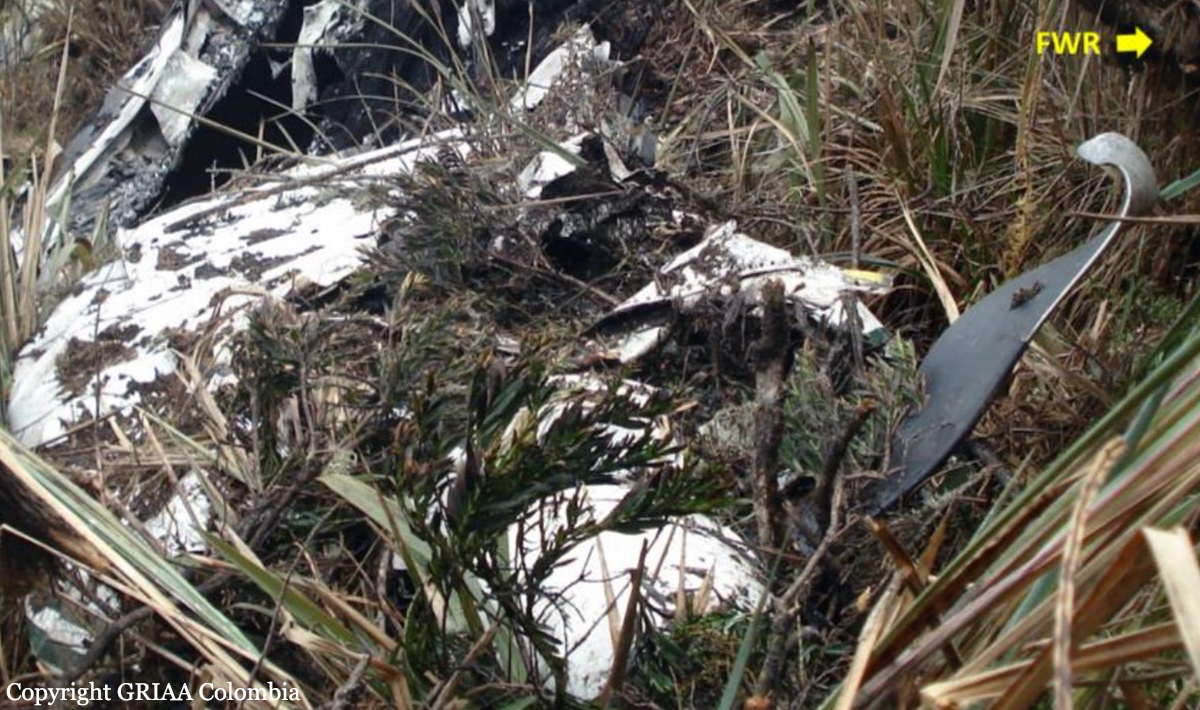Country
Crash of a Piper PA-31-325 Navajo C/R in Tuscaloosa: 6 killed
Date & Time:
Aug 14, 2016 at 1115 LT
Registration:
N447SA
Survivors:
No
Schedule:
Kissimmee – Oxford
MSN:
31-8312016
YOM:
1983
Crew on board:
1
Crew fatalities:
Pax on board:
5
Pax fatalities:
Other fatalities:
Total fatalities:
6
Captain / Total hours on type:
48.00
Aircraft flight hours:
3447
Circumstances:
The private pilot and five passengers departed on a day instrument flight rules cross-country flight in the multiengine airplane. Before departure, the airplane was serviced to capacity with fuel, which corresponded to an endurance of about 5 hours. About 1 hour 45 minutes after reaching the flight's cruise altitude of 12,000 ft mean sea level, the pilot reported a failure of the right engine fuel pump and requested to divert to the nearest airport. About 7 minutes later, the pilot reported that he "lost both fuel pumps" and stated that the airplane had no engine power. The pilot continued toward the diversion airport and the airplane descended until it impacted trees about 1,650 ft short of the approach end of the runway; a postimpact fire ensued. Postaccident examination of the airframe and engines revealed no preimpact failures or malfunctions that would have precluded normal operation. The propellers of both engines were found in the unfeathered position. All six of the fuel pumps on the airplane were functionally tested or disassembled, and none exhibited any anomalies that would have precluded normal operation before the accident. Corrosion was noted in the right fuel boost pump, which was likely the result of water contamination during firefighting efforts by first responders. The airplane was equipped with 4 fuel tanks, comprising an outboard and an inboard fuel tank in each wing. The left and right engine fuel selector valves and corresponding fuel selector handles were found in the outboard tank positions. Given the airplane's fuel state upon departure and review of fuel consumption notes in the flight log from the day of the accident, the airplane's outboard tanks contained sufficient fuel for about 1 hour 45 minutes of flight, which corresponds to when the pilot first reported a fuel pump anomaly to air traffic control. The data downloaded from the engine data monitor was consistent with both engines losing fuel pressure due to fuel starvation. According to the pilot's operating handbook, after reaching cruise flight, fuel should be consumed from the outboard tanks before switching to the inboard tanks. Two fuel quantity gauges were located in the cockpit overhead switch panel to help identify when the pilot should return the fuel selectors from the outboard fuel tanks to the inboard fuel tanks. A flight instructor who previously flew with the pilot stated that this was their normal practice. He also stated that the pilot had not received any training in the accident airplane to include single engine operations and emergency procedures. It is likely that the pilot failed to return the fuel selectors from the outboard to the inboard tank positions once the outboard tanks were exhausted of fuel; however, the pilot misdiagnosed the situation as a fuel pump anomaly.
Probable cause:
A total loss of power in both engines due to fuel starvation as a result of the pilot's fuel mismanagement, and his subsequent failure to follow the emergency checklist. Contributing to the pilot's failure to follow the emergency checklist was his lack of emergency procedures training in the accident airplane.
Final Report:





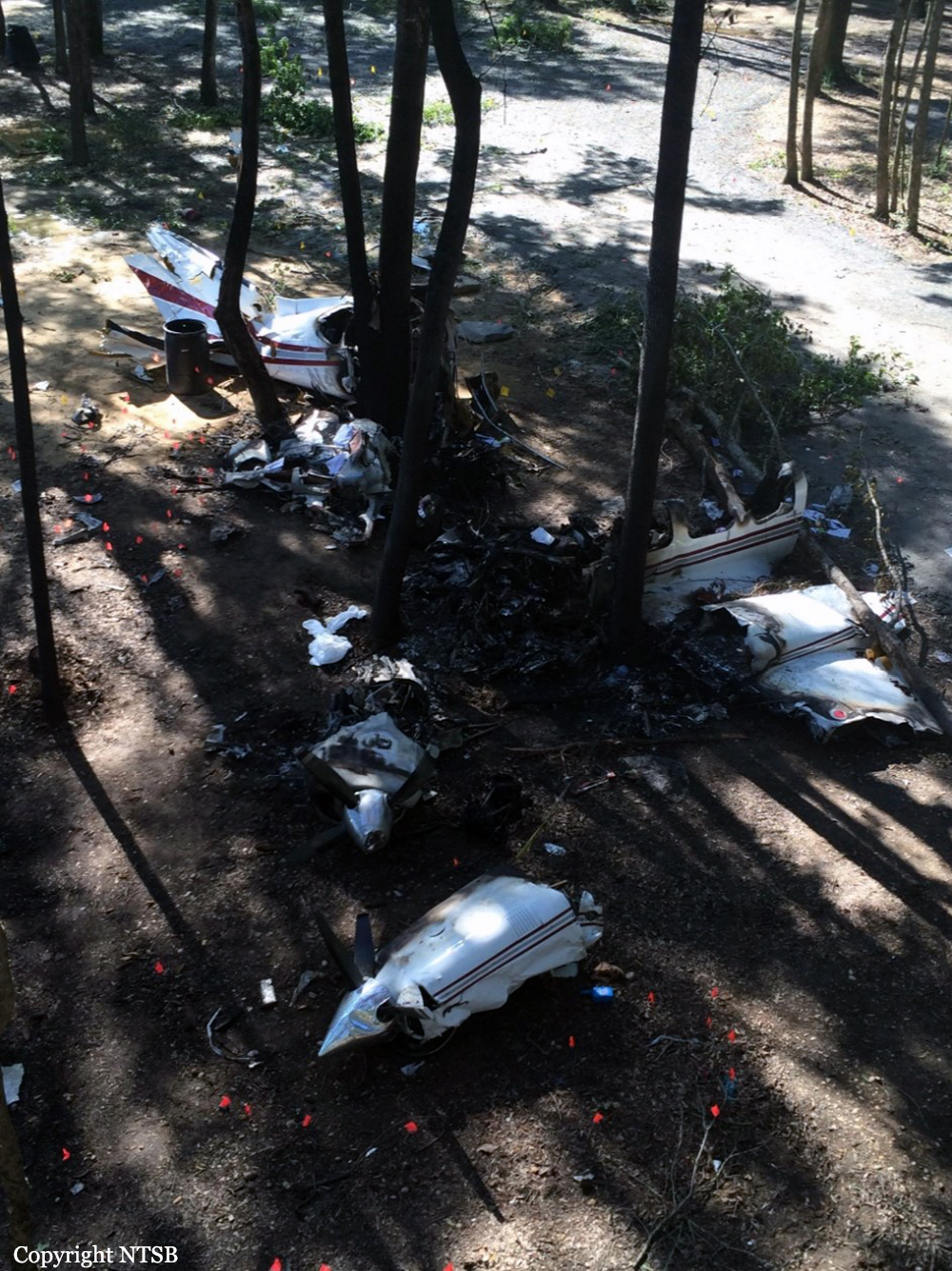


Crash of a Piper PA-31-325 Navajo in State College: 2 killed
Date & Time:
Jun 16, 2016 at 0830 LT
Registration:
N3591P
Survivors:
No
Schedule:
Washington County – State College
MSN:
31-8012081
YOM:
1980
Crew on board:
1
Crew fatalities:
Pax on board:
1
Pax fatalities:
Other fatalities:
Total fatalities:
2
Captain / Total hours on type:
718.00
Aircraft flight hours:
16040
Circumstances:
The commercial pilot was completing an instrument flight rules air taxi flight on a route that he had flown numerous times for the customer on board. Radar and voice communication data revealed that the airplane was vectored to the final approach course for the precision approach and was given a radio frequency change to the destination airport control tower frequency. The tower controller issued a landing clearance, which the pilot acknowledged; there were no further communications with the pilot. Weather conditions at the airport at the time of the accident included an overcast ceiling at 300 ft with 1 mile visibility in mist. The wreckage was located in densely-wooded terrain. Postaccident examination revealed no evidence of any mechanical malfunctions or anomalies that would have precluded normal operation. The wreckage path and evidence of engine power displayed by numerous cut tree branches was consistent with a controlled, wings-level descent with power. A radar performance study revealed that, as the airplane crossed the precision final approach fix 6.7 nautical miles (nm) from the runway threshold, the airplane was 800 ft above the glideslope. At the outer marker, 5.5 nm from the runway threshold, the airplane was 500 ft above the glideslope. When radar contact was lost 3.2 nm from the threshold, the airplane was about 250 ft above the glideslope. Although the airplane remained within the lateral limits of the approach localizer, its last two recorded radar returns would have correlated with a full downward deflection of the glideslope indicator in the cockpit, and therefore, an unstabilized approach. Further interpolation of radar data revealed that, during the last 2 minutes of the accident flight, the airplane's rate of descent increased from 400 ft per minute (fpm) to greater than 1,700 fpm, likely as a result of pilot inputs. During the final minute of the flight, the rate decreased briefly to 1,000 fpm before radar contact was lost. The company's standard operating procedures stated that, if a rate of descent greater than 1,000 fpm was encountered during an instrument approach, a missed approach should be performed. The airplane's relative position to the glideslope and its rapid changes in descent rate after crossing the outer marker suggest that the airplane never met the operator's stabilized approach criteria. Rather than executing a missed approach procedure as outlined in the company's operating procedures, the pilot chose to continue the unstabilized approach, which resulted in a descent into trees and terrain. It is unlikely that the pilot's well-controlled diabetes and effectively treated sleep apnea contributed to the circumstances of this accident. However, whether or not the pilot's multiple sclerosis contributed to this accident could not be determined.
Probable cause:
The pilot's decision to continue an unstabilized instrument approach in instrument meteorological conditions, which resulted in controlled flight into terrain.
Final Report:
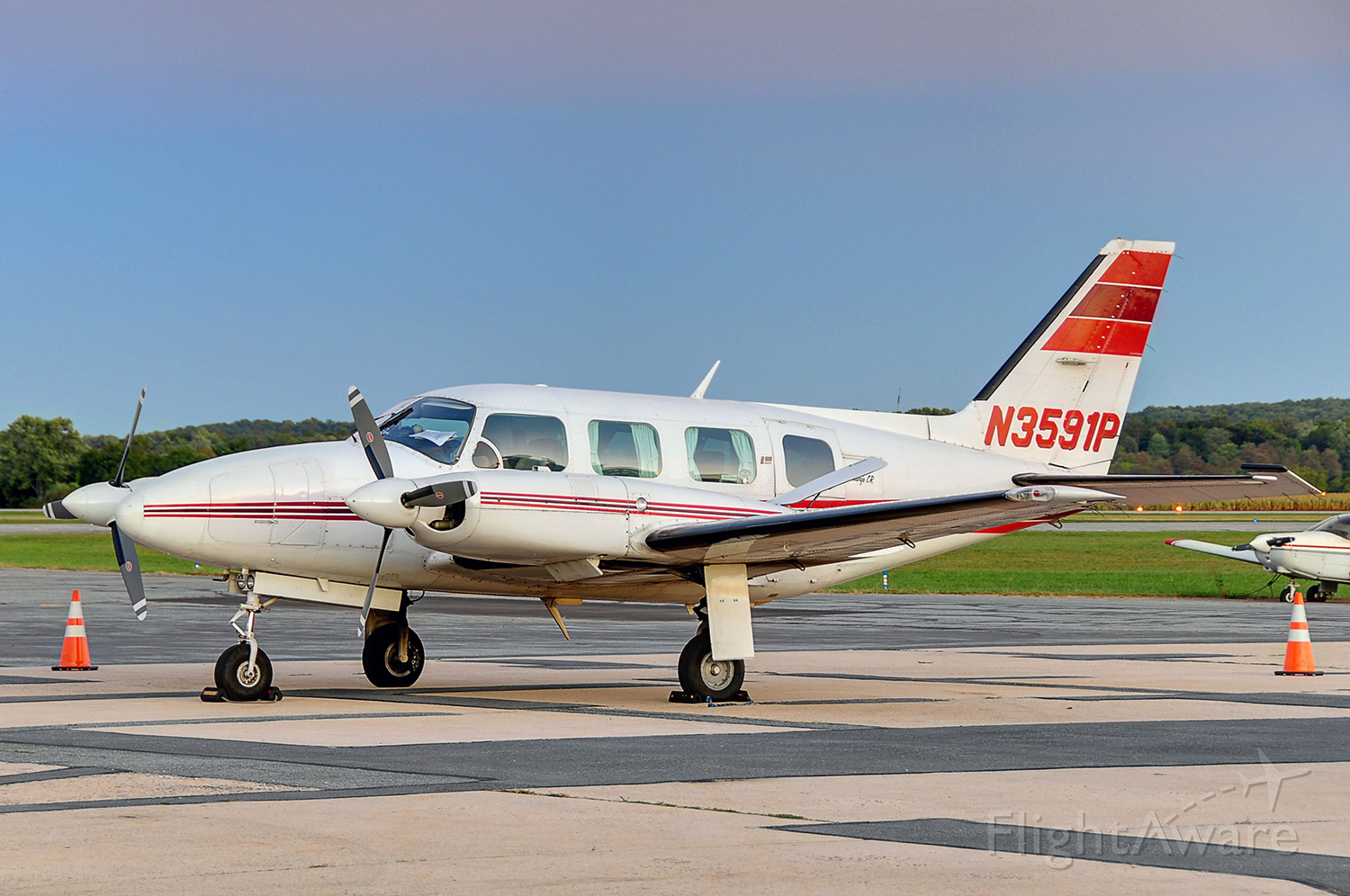
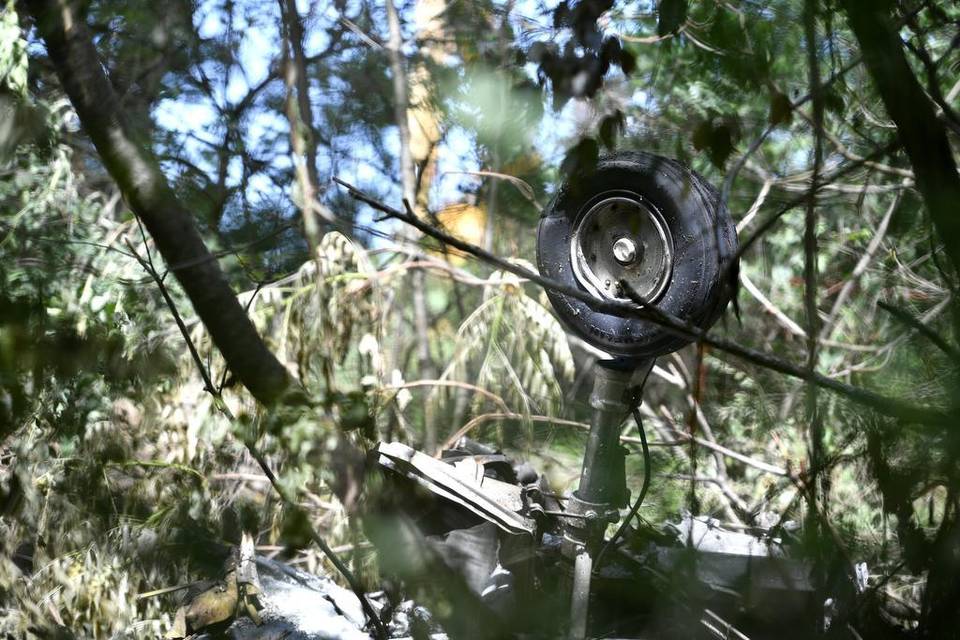
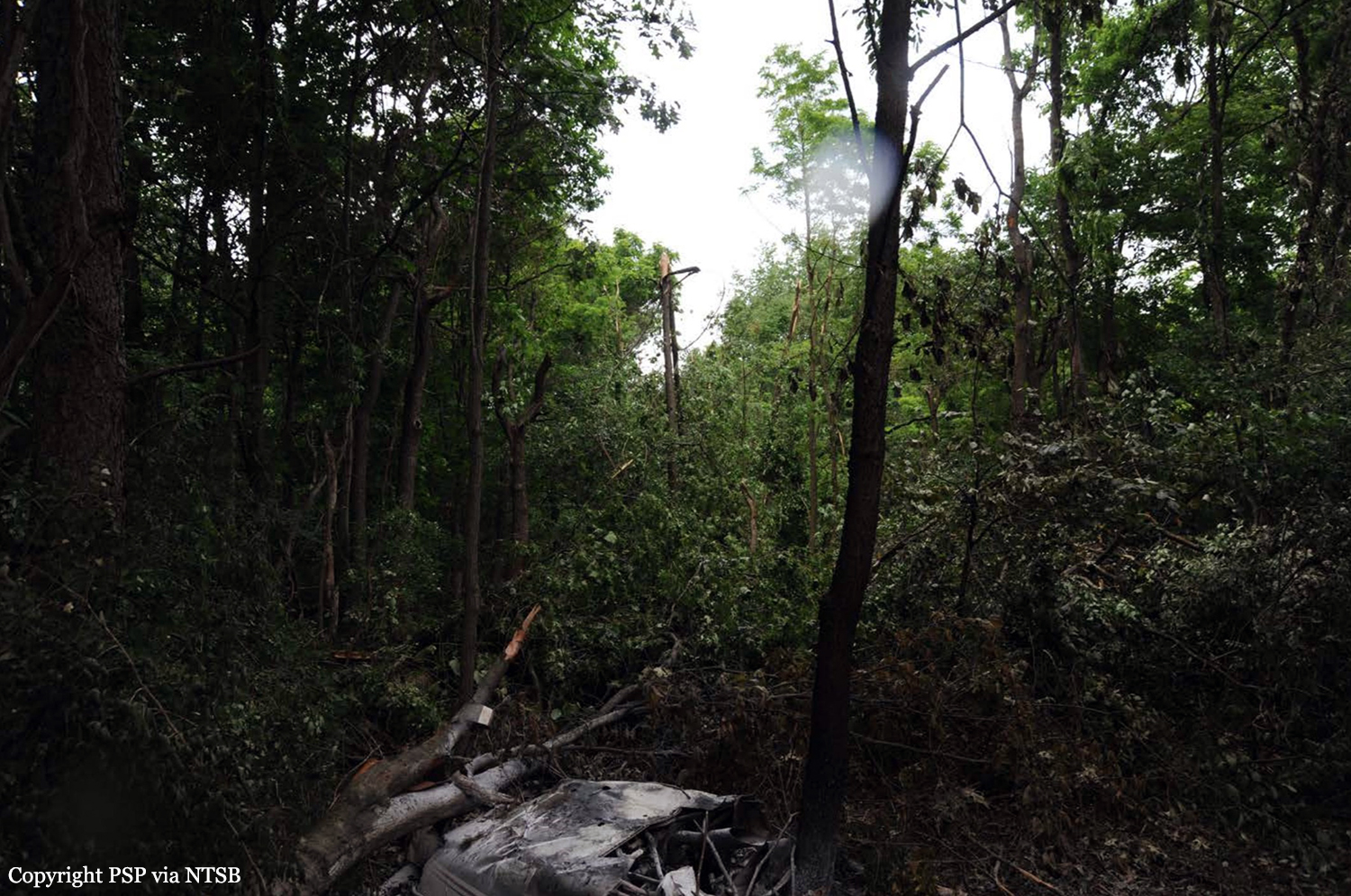
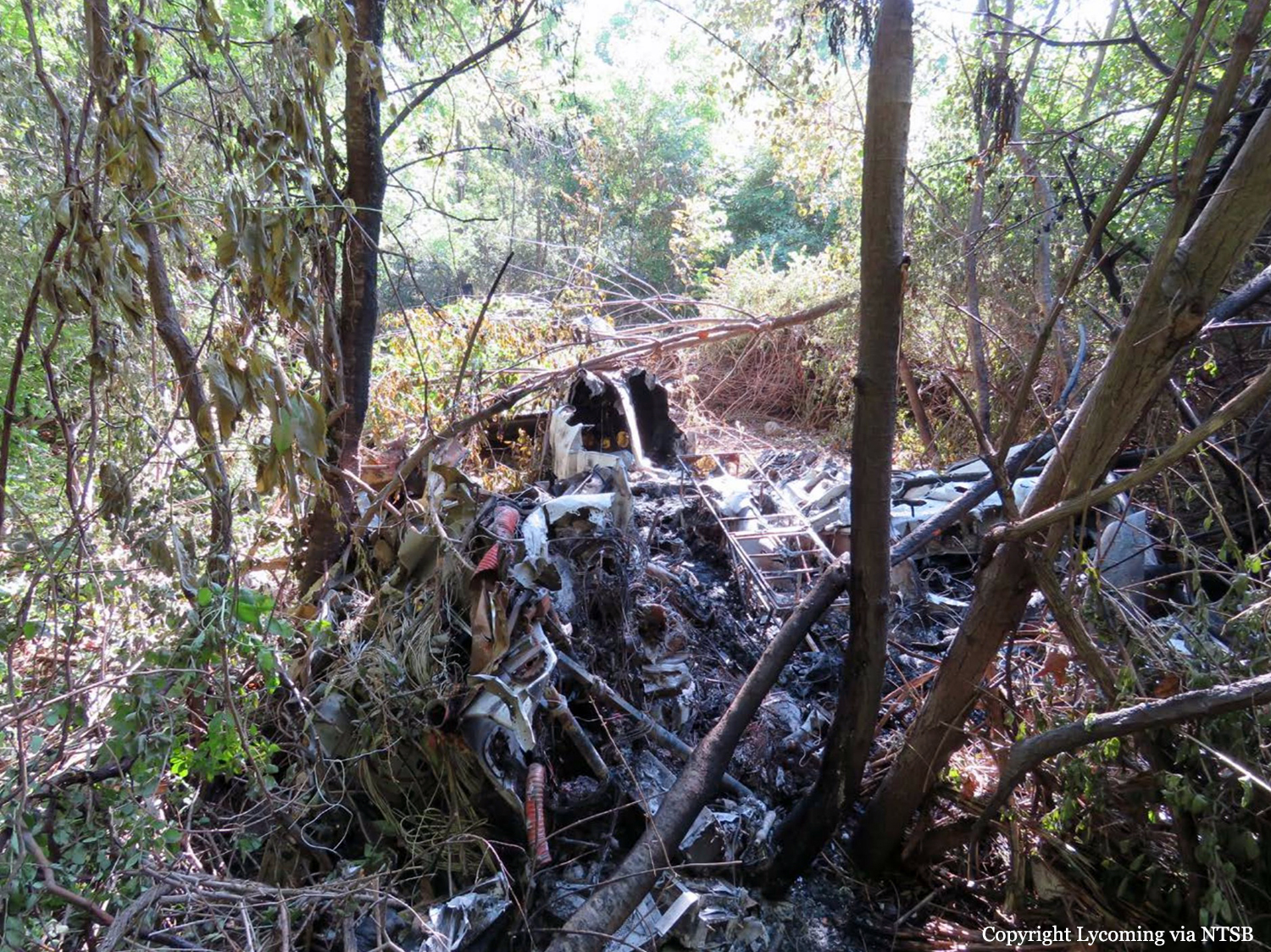

Crash of a Piper PA-31-310 in Guatemala City
Date & Time:
Nov 21, 2015 at 1240 LT
Registration:
C6-TAK
Survivors:
Yes
Schedule:
Guatemala City - Guatemala City
MSN:
31-228
YOM:
1968
Crew on board:
2
Crew fatalities:
Pax on board:
0
Pax fatalities:
Other fatalities:
Total fatalities:
0
Aircraft flight hours:
7600
Circumstances:
The crew departed Guatemala City-La Aurora Airport on a local training flight. Shortly after takeoff from runway 02, while in initial climb, the aircraft entered a right turn then lost height and crashed near an industrial building located about 900 metres from the runway 20 threshold. The aircraft was destroyed by impact forces and a post crash fire. Both pilots escaped uninjured.
Probable cause:
The aircraft stalled at low height after takeoff due to a poor crew coordination about flight controls.
Final Report:

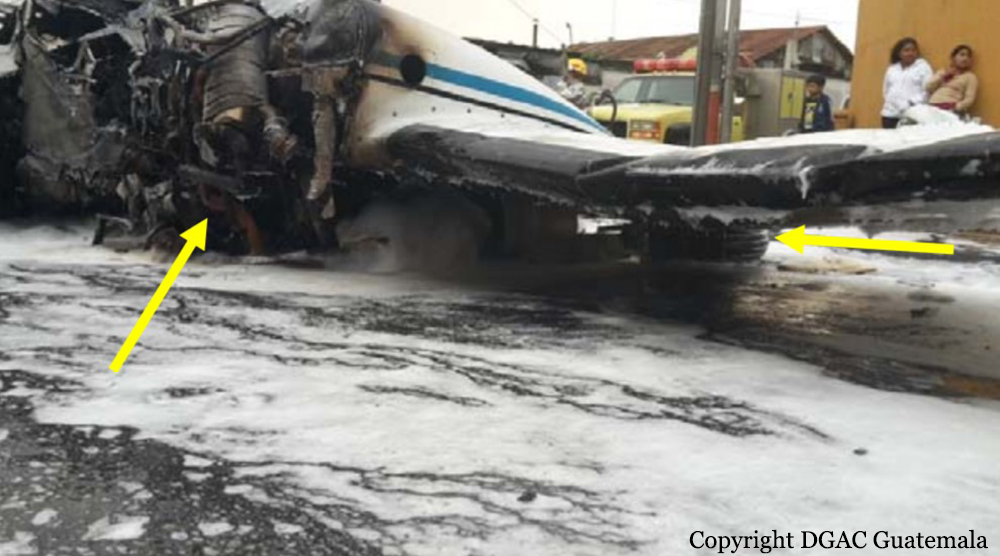
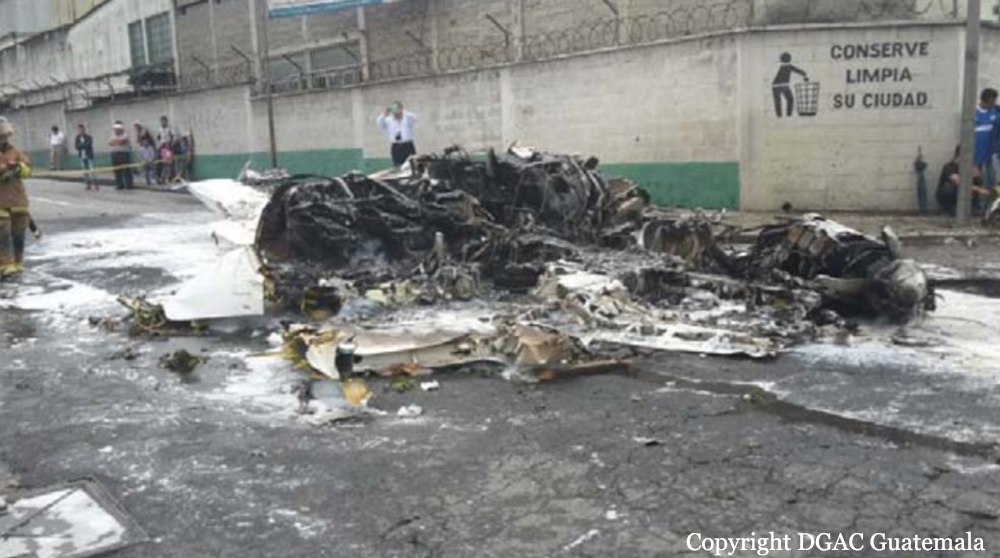
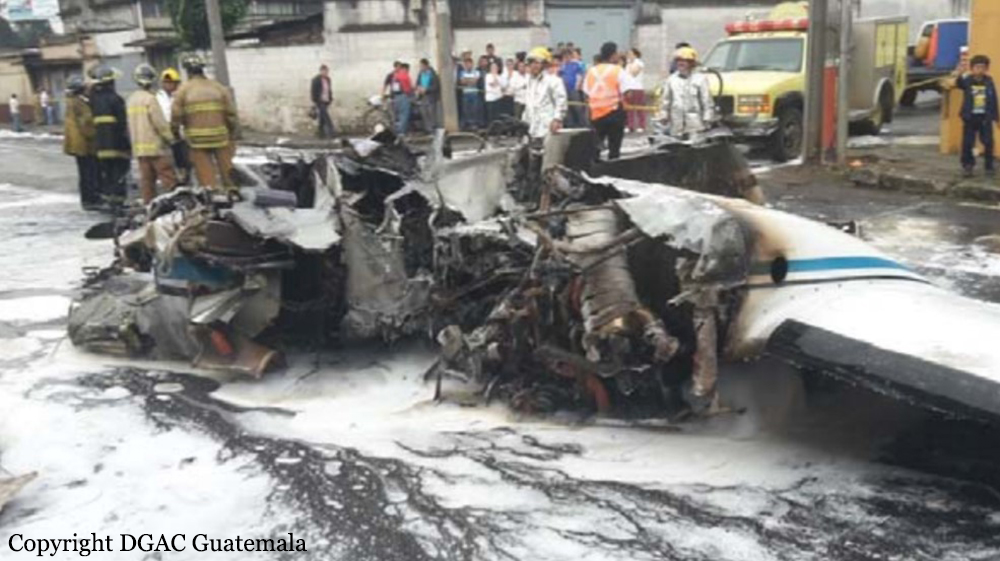
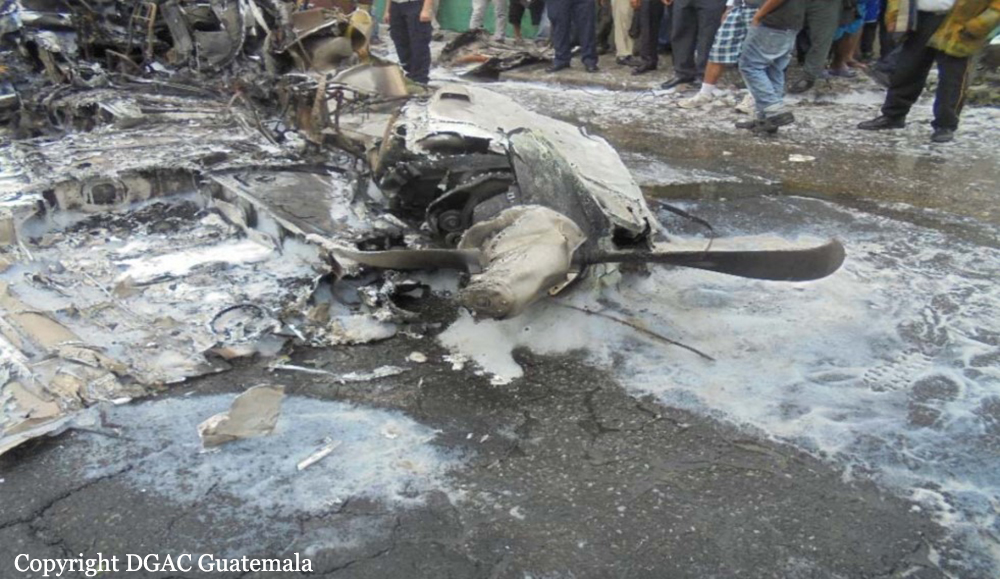
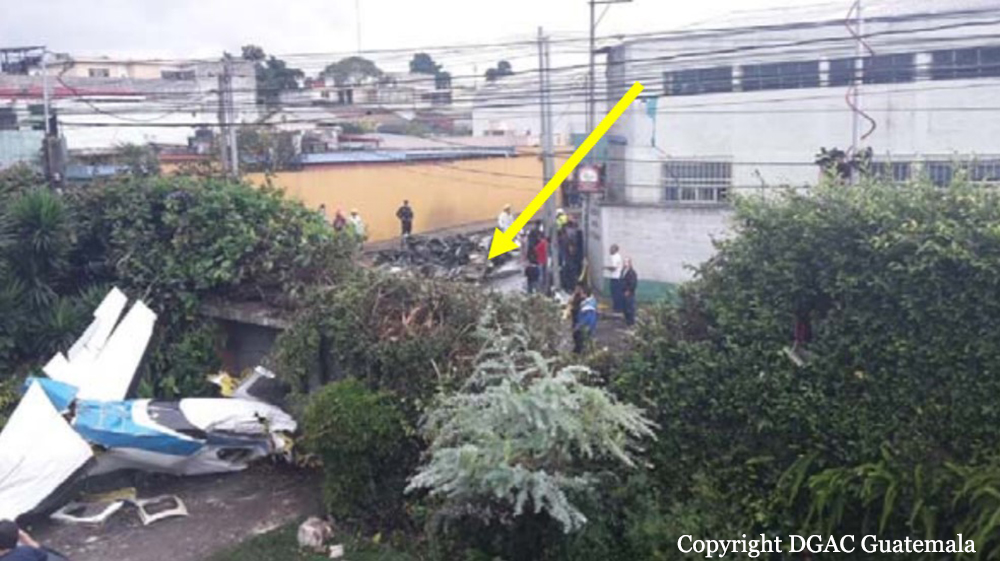
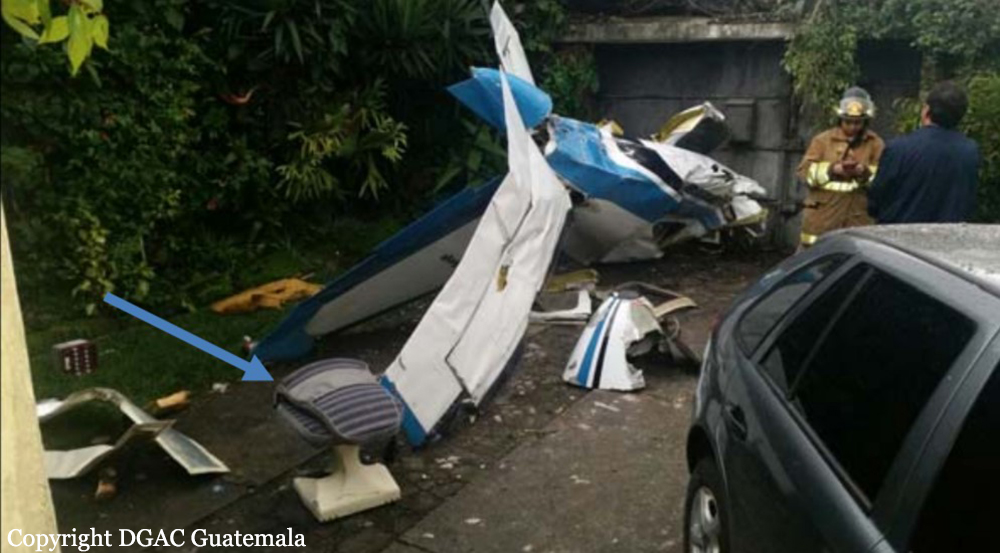
Crash of a Piper PA-31-325 Navajo C/R in Bogotá: 2 killed
Date & Time:
Oct 3, 2015 at 1212 LT
Registration:
HK-3909G
Survivors:
Yes
Schedule:
Bogotá – Medellín
MSN:
31-7612070
YOM:
1976
Crew on board:
1
Crew fatalities:
Pax on board:
2
Pax fatalities:
Other fatalities:
Total fatalities:
2
Captain / Total hours on type:
121.00
Aircraft flight hours:
5209
Circumstances:
Shortly after takeoff from Bogotá-Guaymaral Airport, while climbing, the pilot declared an emergency after the failure of the right engine. He attempted an emergency landing in an open field when the aircraft crashed in a prairie located near the Los Andes hippodrome, some 5 km northeast of Guaymaral Airport, bursting into flames. A passenger was seriously injured while both other occupants were killed.
Probable cause:
Failure of the right engine during initial climb due to the failure of internal components. The high density altitude was considered as a contributing factor as its affected the aircraft performances.
Final Report:
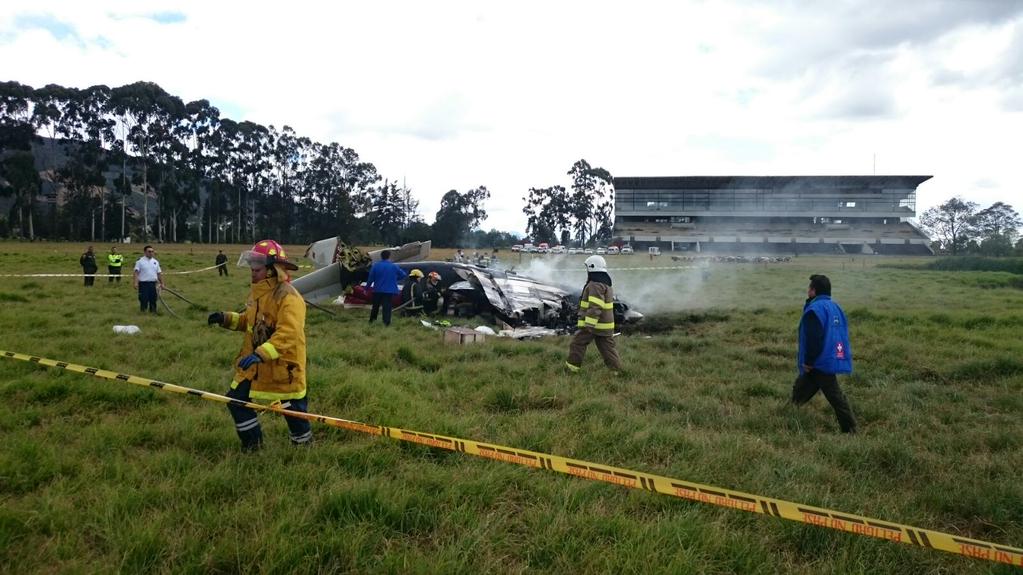
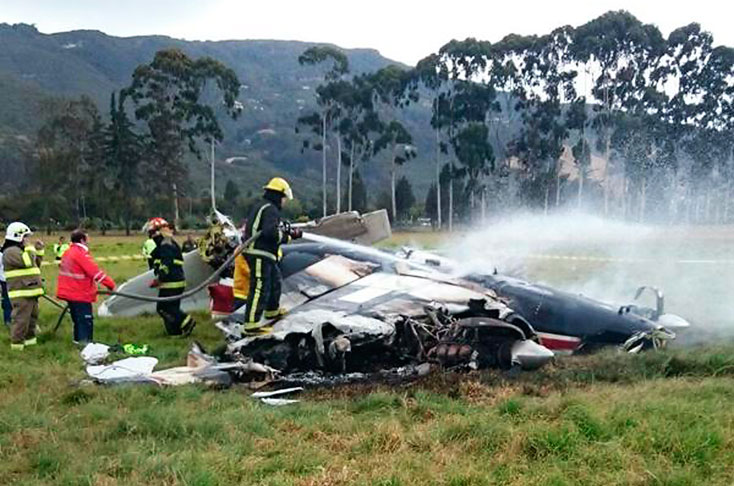
Crash of a Piper PA-31-310 Navajo in Los Camastros: 1 killed
Date & Time:
Oct 2, 2015 at 1203 LT
Registration:
C-GCMD
Survivors:
No
MSN:
31-7912101
YOM:
1979
Crew on board:
1
Crew fatalities:
Pax on board:
0
Pax fatalities:
Other fatalities:
Total fatalities:
1
Circumstances:
The pilot, sole on board, departed Managua-Augusto C. Sandino Airport at 0934LT on a flight for the Australian Company CSA Global, taking part to a geological mission dedicated to the construction of a canal. In unknown circumstances, the twin engine aircraft went out of control and crashed in a field located in Los Camastros, about one km north of Veracruz. The pilot was killed and maybe tried to use a parachute before the crash as one was found in the wreckage.
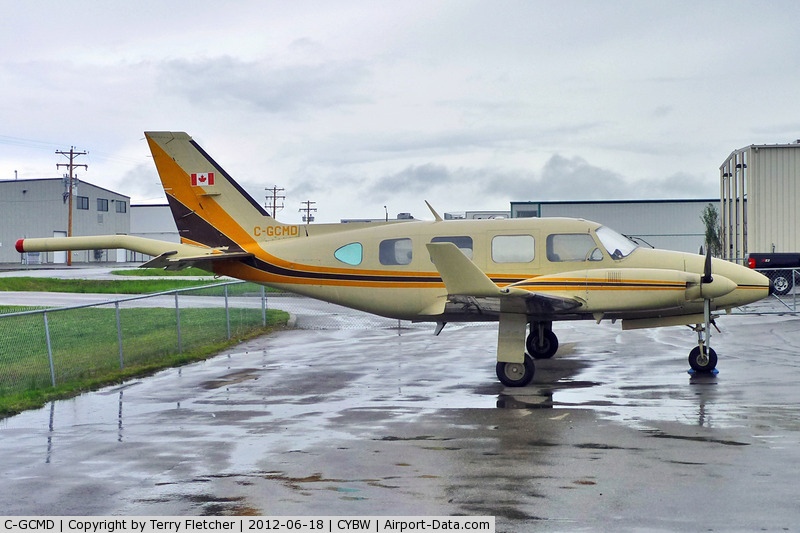
Crash of a Piper PA-31-425 Pressurized Navajo in Conrado Castillo: 6 killed
Date & Time:
Nov 14, 2014 at 1730 LT
Registration:
XB-ZAX
Survivors:
No
Schedule:
San Luis Potosí – Ciudad Victoria – Torreón
MSN:
31-46
YOM:
1967
Crew on board:
1
Crew fatalities:
Pax on board:
5
Pax fatalities:
Other fatalities:
Total fatalities:
6
Circumstances:
The twin engine aircraft departed San Luis Potosí on a flight to Torreón with an intermediate stop in Ciudad Victoria, carrying five passengers and one pilot. At the end of the afternoon, while descending to Ciudad Victoria Airport, the pilot encountered poor weather conditions. Too low, the aircraft impacted trees and crashed in a hilly terrain located near Conrado Castillo. The wreckage was found the following morning about 60 km northwest of Ciudad Victoria Airport. The aircraft disintegrated on impact and all six occupants were killed.
Pilot:
Juan José Castro Maldonado
Passengers:
Maribel Lumbreras,
Paulina García Lumbreras,
Lucero Salazar Méndez,
Juana Lumbreras Ruiz,
Guadalupe Lumbreras Ruiz.
Pilot:
Juan José Castro Maldonado
Passengers:
Maribel Lumbreras,
Paulina García Lumbreras,
Lucero Salazar Méndez,
Juana Lumbreras Ruiz,
Guadalupe Lumbreras Ruiz.
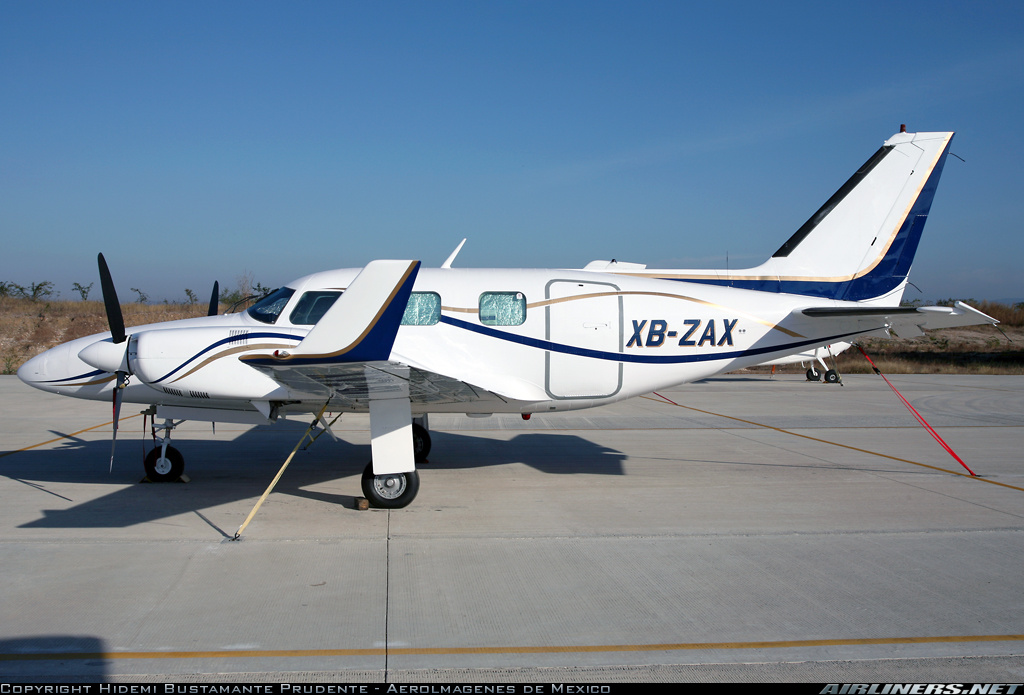

Crash of a Piper PA-31-325 Navajo in Grand Manan Island: 2 killed
Date & Time:
Aug 16, 2014 at 0512 LT
Registration:
C-GKWE
Survivors:
Yes
Schedule:
Saint John - Grand Manan Island
MSN:
31-7812037
YOM:
1978
Crew on board:
2
Crew fatalities:
Pax on board:
2
Pax fatalities:
Other fatalities:
Total fatalities:
2
Copilot / Total hours on type:
67
Circumstances:
The Atlantic Charters Piper PA-31aircraft had carried out a MEDEVAC flight from Grand Manan, New Brunswick, to Saint John, New Brunswick. At 0436 Atlantic Daylight Time, the aircraft departed Saint John for the return flight to Grand Manan with 2 pilots and 2 passengers. Following an attempt to land on Runway 24 at Grand Manan Airport, the captain carried out a go-around. During the second approach, with the landing gear extended, the aircraft contacted a road perpendicular to the runway, approximately 1500 feet before the threshold. The aircraft continued straight through 100 feet of brush before briefly becoming airborne. At about 0512, the aircraft struck the ground left of the runway centreline, approximately 1000 feet before the threshold. The captain and 1 passenger sustained fatal injuries. The other pilot and the second passenger sustained serious injuries. The aircraft was destroyed; an emergency locator transmitter signal was received. The accident occurred during the hours of darkness.
Probable cause:
Findings as to causes and contributing factors:
1. The captain commenced the flight with only a single headset on board, thereby preventing a shared situational awareness among the crew.
2. It is likely that the weather at the time of both approaches was such that the captain could not see the required visual references to ensure a safe landing.
3. The first officer was focused on locating the runway and was unaware of the captain’s actions during the descent.
4. For undetermined reasons, the captain initiated a steep descent 0.56 nautical mile from the threshold, which went uncorrected until a point from which it was too late to recover.
5. The aircraft contacted a road 0.25 nautical mile short of the runway and struck terrain.
6. The paramedic was not wearing a seatbelt and was not restrained during the impact sequence.
Findings as to risk:
1. If cockpit data recordings are not available to an investigation, then the identification and communication of safety deficiencies to advance transportation safety may be precluded.
2. If crew members are unable to communicate effectively, then they are less likely to anticipate and coordinate their actions, which could jeopardize the safety of flight.
3. If crew resource management training is not provided, used and continuously fostered, then there is a risk that pilots will be unprepared to avoid or mitigate crew errors encountered during flight.
4. If an actual weight and balance cannot be determined, then the aircraft may be operating outside of its approved limits, which could affect the aircraft’s performance characteristics.
5. If pre-computed weight and balance forms do not include standard items, then it increases the likelihood of omissions in weight and balance calculations, which increases the risk of inadvertently overloading or incorrectly loading the aircraft.
6. If organizations carry out a maintenance task that they consider to be elementary work and the task is not approved as an elementary work task, then there is a risk that the aircraft will not conform to its type design, which could jeopardize the safety of flight.
7. If individuals are performing maintenance tasks for which they have not received approved training, then there is a risk that the task will not be performed in accordance with the manufacturer’s instructions.
8. If components are not installed in accordance with the manufacturer’s instructions, then occupants are at a greater risk of injury or death during an incident or accident if these components are not properly secured.
9. If organizations do not record when maintenance is carried out, then the proper completion of tasks cannot be confirmed, and there is a risk that the aircraft will not conform to its type design, which could jeopardize the safety of flight.
10. If an aircraft is modified without regulatory approval and without supporting documentation, then the aircraft is not in compliance with all applicable standards of airworthiness, which could jeopardize the safety of flight.
11. If an operator undertakes unapproved changes to a supplemental type certificate, then there is a risk that the aircraft will not be airworthy, which could jeopardize the safety of flight.
12. If organizations do not use modern safety management practices, then there is an increased risk that hazards will not be identified and risks mitigated.
13. If Transport Canada does not adopt a balanced approach that combines thorough inspections for compliance with audits of safety management processes, unsafe operating practices may not be identified, thereby increasing the risk of accidents.
14. If organizations contract aviation companies to provide a service with which the organizations are not familiar, then there is an increased risk that safety deficiencies will go unnoticed, which could jeopardize the safety of the organizations’ employees.
15. If passengers are not provided with a regular safety briefing, then there is an increased risk that they will not use the available safety equipment or be able to perform necessary emergency functions in a timely manner to avoid injury or death.
16. If passengers are not properly restrained, then there is an increased risk of injuries and death to those passengers and the other occupants in the event of an accident.
17. If carry-on baggage, equipment or cargo is not restrained, then occupants are at a greater risk of injury or death if these items become projectiles in a crash.
18. If carry-on baggage, equipment or cargo is not restrained, then there is an increased risk that the occupants’ access to normal and emergency exits, and to safety equipment, will be completely or partially blocked.
19. If pilots continue an approach below published minimum descent altitudes without seeing the required visual references, then there is a risk of collision with terrain and/or obstacles.
20. If current charts and databases are not used, then navigational accuracy and obstacle avoidance cannot be assured.
21. If GPS (global positioning system) approaches are conducted without the approved Operations Specification, then there is a risk that the pilot’s training and knowledge will be inadequate to safely conduct the approach.
22. If medical symptoms/conditions are not reported to Transport Canada, then it negates some of the safety benefit of examinations and increases the risk that pilots will continue to fly with a medical condition that poses a risk to safety.
Other findings:
1. The pilot who installed the air ambulance system did not have approved training, nor was the pilot approved to carry out elementary work.
2. Atlantic Charters was not approved to install the air ambulance system as an elementary work task.
3. Atlantic Charters’ pre-computed weight and balance form did not include a line item to indicate nacelle fuel.
4. The semi-annual safety training offered to paramedics in lieu of safety briefings prior to flights did not meet regulatory requirements.
1. The captain commenced the flight with only a single headset on board, thereby preventing a shared situational awareness among the crew.
2. It is likely that the weather at the time of both approaches was such that the captain could not see the required visual references to ensure a safe landing.
3. The first officer was focused on locating the runway and was unaware of the captain’s actions during the descent.
4. For undetermined reasons, the captain initiated a steep descent 0.56 nautical mile from the threshold, which went uncorrected until a point from which it was too late to recover.
5. The aircraft contacted a road 0.25 nautical mile short of the runway and struck terrain.
6. The paramedic was not wearing a seatbelt and was not restrained during the impact sequence.
Findings as to risk:
1. If cockpit data recordings are not available to an investigation, then the identification and communication of safety deficiencies to advance transportation safety may be precluded.
2. If crew members are unable to communicate effectively, then they are less likely to anticipate and coordinate their actions, which could jeopardize the safety of flight.
3. If crew resource management training is not provided, used and continuously fostered, then there is a risk that pilots will be unprepared to avoid or mitigate crew errors encountered during flight.
4. If an actual weight and balance cannot be determined, then the aircraft may be operating outside of its approved limits, which could affect the aircraft’s performance characteristics.
5. If pre-computed weight and balance forms do not include standard items, then it increases the likelihood of omissions in weight and balance calculations, which increases the risk of inadvertently overloading or incorrectly loading the aircraft.
6. If organizations carry out a maintenance task that they consider to be elementary work and the task is not approved as an elementary work task, then there is a risk that the aircraft will not conform to its type design, which could jeopardize the safety of flight.
7. If individuals are performing maintenance tasks for which they have not received approved training, then there is a risk that the task will not be performed in accordance with the manufacturer’s instructions.
8. If components are not installed in accordance with the manufacturer’s instructions, then occupants are at a greater risk of injury or death during an incident or accident if these components are not properly secured.
9. If organizations do not record when maintenance is carried out, then the proper completion of tasks cannot be confirmed, and there is a risk that the aircraft will not conform to its type design, which could jeopardize the safety of flight.
10. If an aircraft is modified without regulatory approval and without supporting documentation, then the aircraft is not in compliance with all applicable standards of airworthiness, which could jeopardize the safety of flight.
11. If an operator undertakes unapproved changes to a supplemental type certificate, then there is a risk that the aircraft will not be airworthy, which could jeopardize the safety of flight.
12. If organizations do not use modern safety management practices, then there is an increased risk that hazards will not be identified and risks mitigated.
13. If Transport Canada does not adopt a balanced approach that combines thorough inspections for compliance with audits of safety management processes, unsafe operating practices may not be identified, thereby increasing the risk of accidents.
14. If organizations contract aviation companies to provide a service with which the organizations are not familiar, then there is an increased risk that safety deficiencies will go unnoticed, which could jeopardize the safety of the organizations’ employees.
15. If passengers are not provided with a regular safety briefing, then there is an increased risk that they will not use the available safety equipment or be able to perform necessary emergency functions in a timely manner to avoid injury or death.
16. If passengers are not properly restrained, then there is an increased risk of injuries and death to those passengers and the other occupants in the event of an accident.
17. If carry-on baggage, equipment or cargo is not restrained, then occupants are at a greater risk of injury or death if these items become projectiles in a crash.
18. If carry-on baggage, equipment or cargo is not restrained, then there is an increased risk that the occupants’ access to normal and emergency exits, and to safety equipment, will be completely or partially blocked.
19. If pilots continue an approach below published minimum descent altitudes without seeing the required visual references, then there is a risk of collision with terrain and/or obstacles.
20. If current charts and databases are not used, then navigational accuracy and obstacle avoidance cannot be assured.
21. If GPS (global positioning system) approaches are conducted without the approved Operations Specification, then there is a risk that the pilot’s training and knowledge will be inadequate to safely conduct the approach.
22. If medical symptoms/conditions are not reported to Transport Canada, then it negates some of the safety benefit of examinations and increases the risk that pilots will continue to fly with a medical condition that poses a risk to safety.
Other findings:
1. The pilot who installed the air ambulance system did not have approved training, nor was the pilot approved to carry out elementary work.
2. Atlantic Charters was not approved to install the air ambulance system as an elementary work task.
3. Atlantic Charters’ pre-computed weight and balance form did not include a line item to indicate nacelle fuel.
4. The semi-annual safety training offered to paramedics in lieu of safety briefings prior to flights did not meet regulatory requirements.
Final Report:
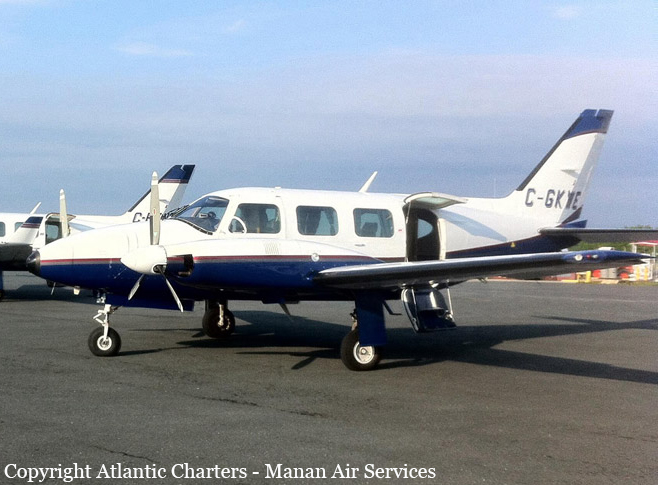
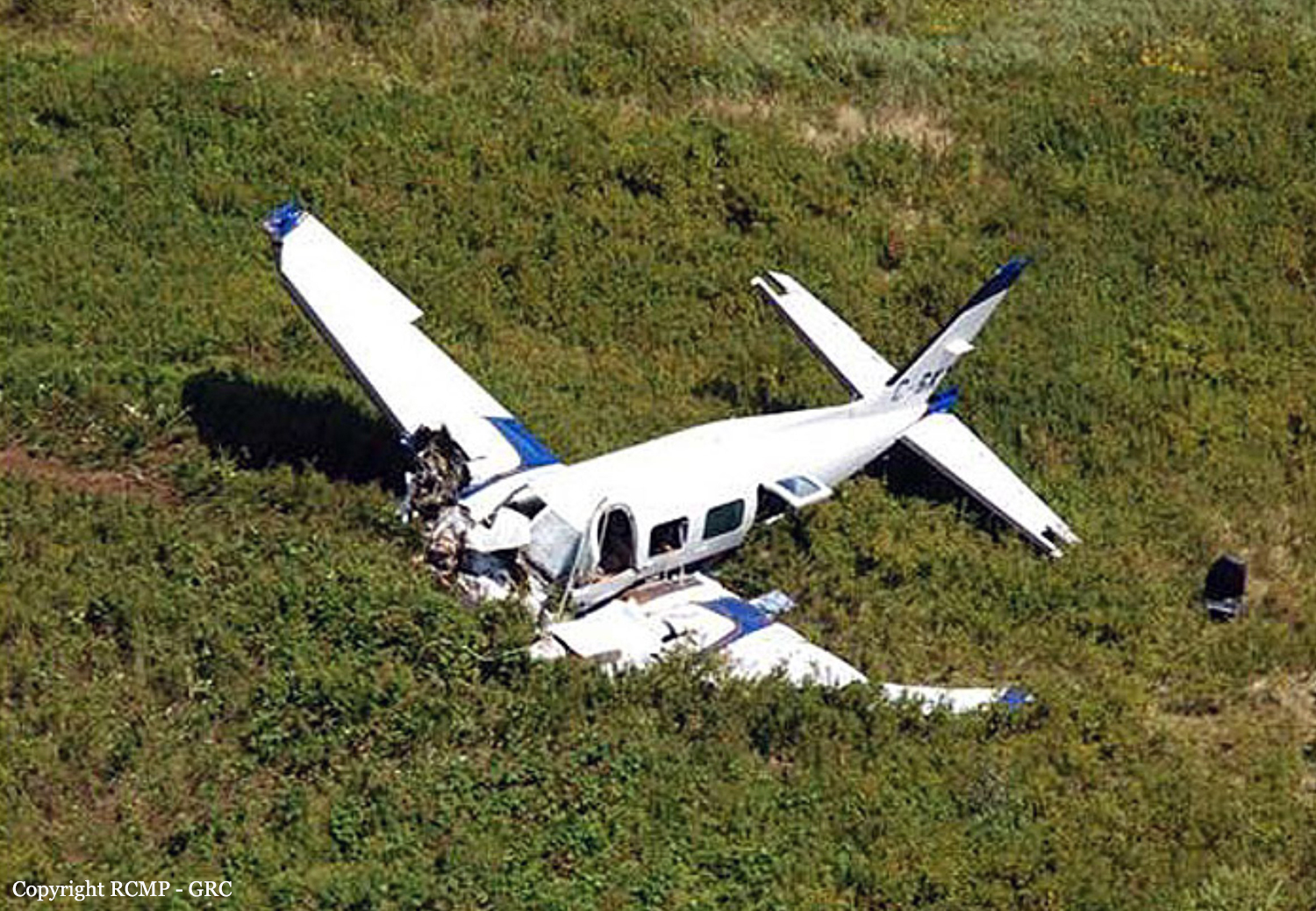
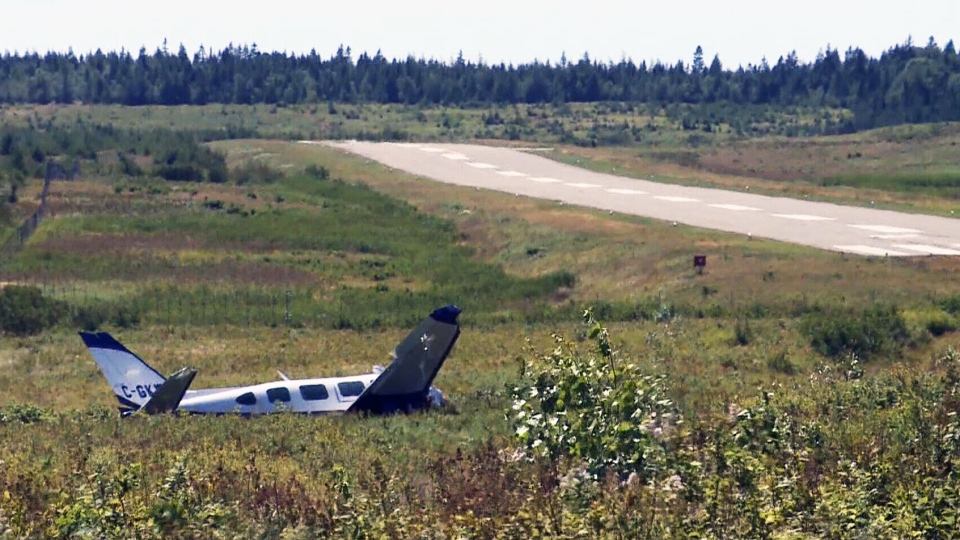
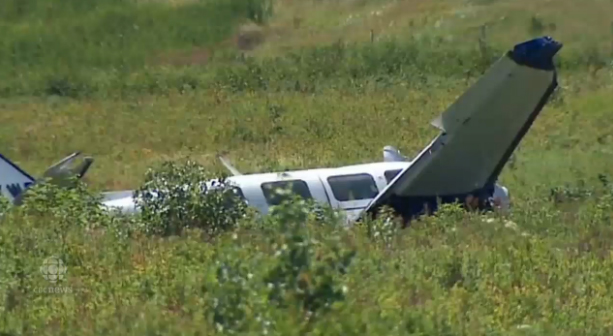
Crash of a Piper PA-31P Pressurized Navajo in Częstochowa: 11 killed
Date & Time:
Jul 5, 2014 at 1611 LT
Registration:
N11WB
Survivors:
Yes
Schedule:
Częstochowa - Częstochowa
MSN:
31P-7630005
YOM:
1976
Crew on board:
1
Crew fatalities:
Pax on board:
11
Pax fatalities:
Other fatalities:
Total fatalities:
11
Captain / Total hours on type:
40.00
Circumstances:
The twin engine aircraft was engaged in a series of skydiving flights at Częstochowa-Rudniki Airport, Silesia. It took off from runway 26C with 11 skydivers and one pilot on board. During initial climb, at an altitude of 100 metres, the pilot encountered technical problems with the engines and elected to make an emergency landing. He informed the passengers about the emergency situation and reduced his altitude when the aircraft rolled to the left to an angle of 70° then stalled and crashed in a wooded area, bursting into flames. The wreckage was found 4,200 metres past the runway end. Three skydivers were seriously injured while 9 other occupants were killed. Few minutes later, two of the survivors died from their injuries.
Probable cause:
The following findings were identified:
- The aircraft was operated without a valid CofA,
- Failure of the left engine during initial climb after the crankshaft failed, causing the malfunction of the propeller that could not be feathered, resulting in an asymmetry that caused the aircraft to enter a stall condition. Damages to the pin clutch connecting the crankshaft to the drive shaft of the right engine transmission could be due to the following causes: an earlier impact of a propeller's blade with an obstacle, in circumstances and time which could not be determined and/or a long-term fatigue process caused by uneven engine operation (one of the cylinders was replaced on the right engine),
- Improper maintenance of the aircraft,
- The left engine was producing low power due to improper operation,
- The fuel in the tanks did not meet the engine manufacturer's requirements,
- The aircraft was modified in violation of its Type Certificate,
- A high ambiant temperature.
- The aircraft was operated without a valid CofA,
- Failure of the left engine during initial climb after the crankshaft failed, causing the malfunction of the propeller that could not be feathered, resulting in an asymmetry that caused the aircraft to enter a stall condition. Damages to the pin clutch connecting the crankshaft to the drive shaft of the right engine transmission could be due to the following causes: an earlier impact of a propeller's blade with an obstacle, in circumstances and time which could not be determined and/or a long-term fatigue process caused by uneven engine operation (one of the cylinders was replaced on the right engine),
- Improper maintenance of the aircraft,
- The left engine was producing low power due to improper operation,
- The fuel in the tanks did not meet the engine manufacturer's requirements,
- The aircraft was modified in violation of its Type Certificate,
- A high ambiant temperature.
Final Report:
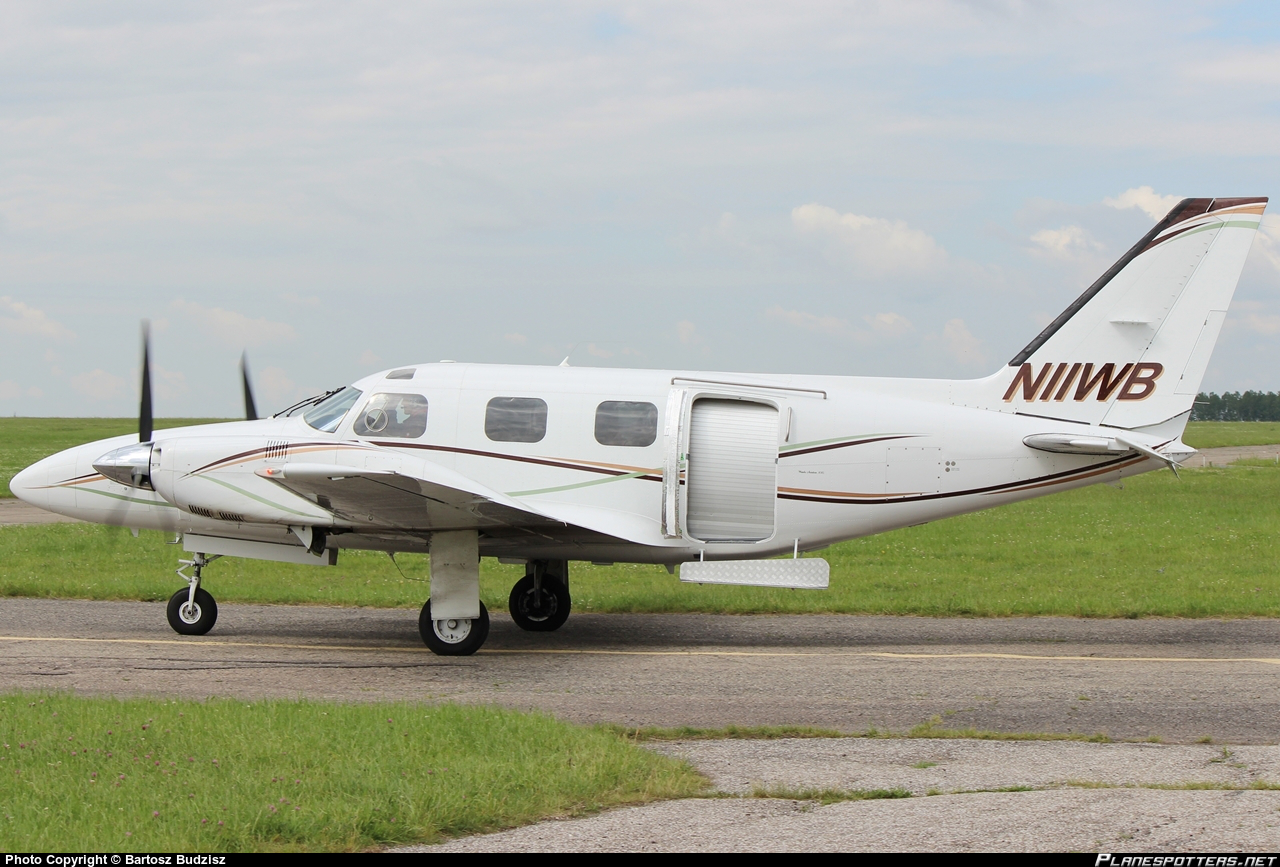
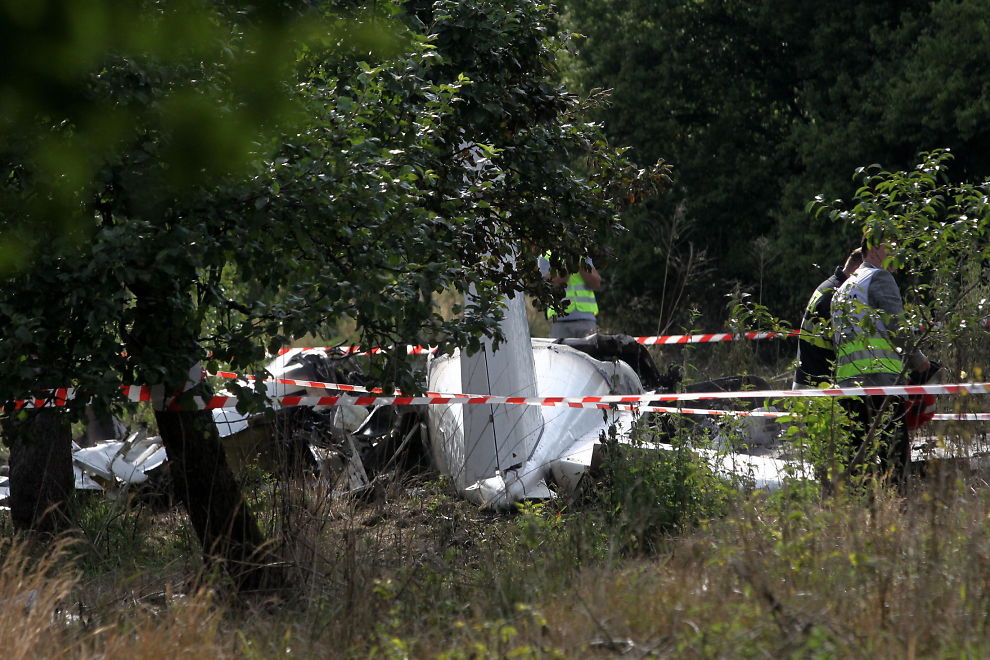
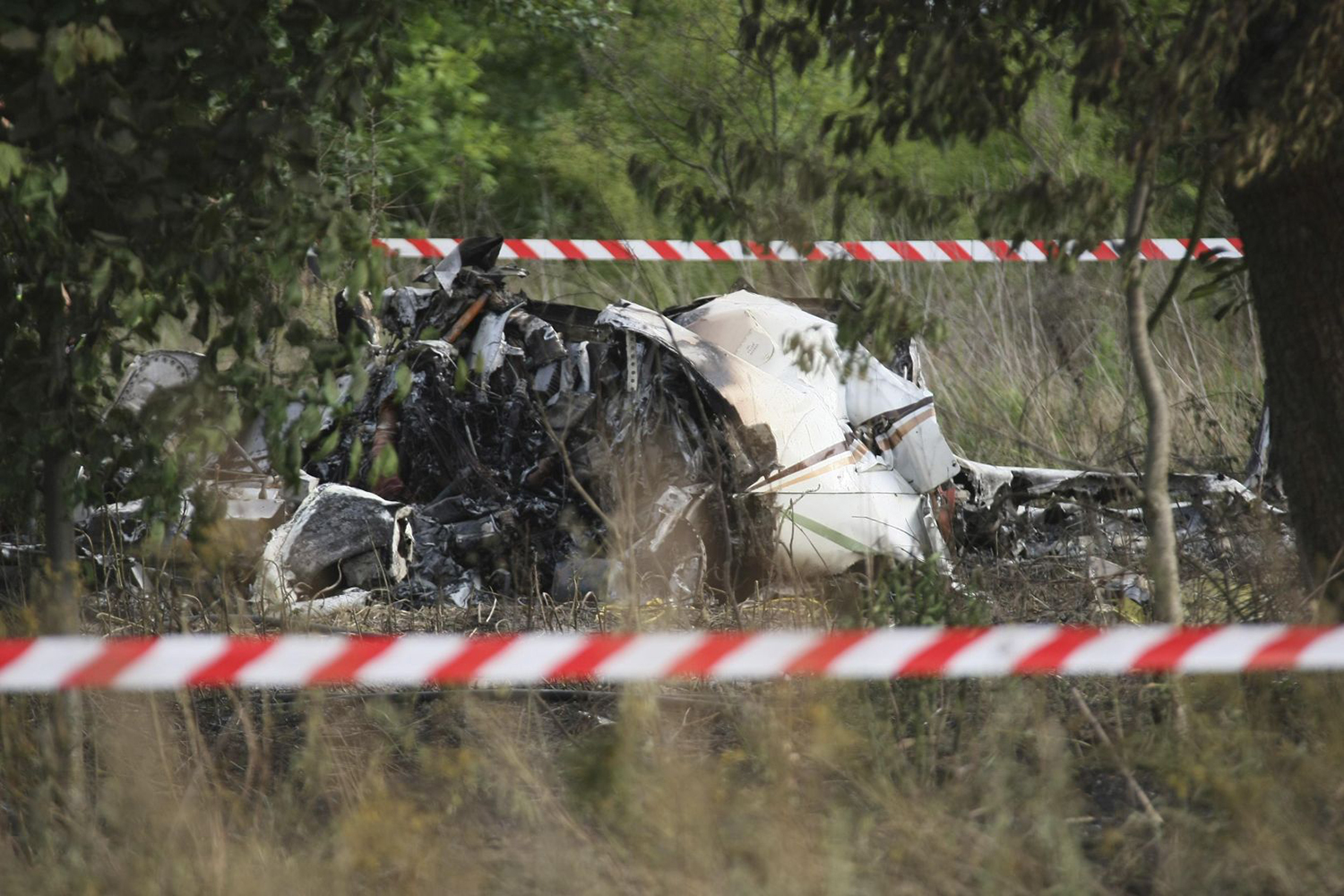

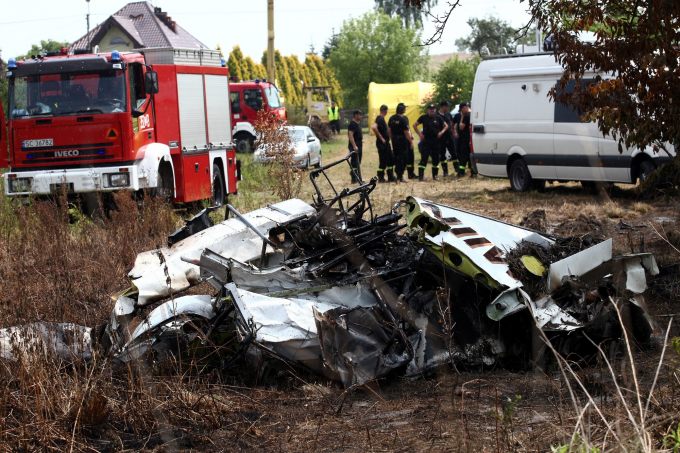
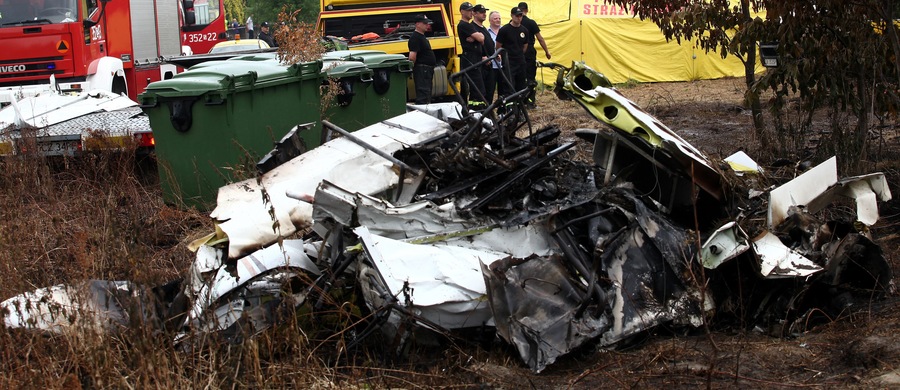

Crash of a Piper PA-31-310 Navajo near Coromoro: 2 killed
Date & Time:
May 3, 2014 at 1023 LT
Registration:
C-GSVM
Survivors:
No
Schedule:
Bucaramanga - Bucaramanga
MSN:
31-109
YOM:
1968
Crew on board:
1
Crew fatalities:
Pax on board:
1
Pax fatalities:
Other fatalities:
Total fatalities:
2
Captain / Total hours on type:
1400.00
Aircraft flight hours:
11000
Circumstances:
The twin engine aircraft departed Bucaramanga-Palonegro Airport at 0804LT on a geophysical mission over the Coromoro Region, Santander. At 1000LT, the last radio contact was recorded with the pilot. While flying in marginal weather conditions (low clouds), the aircraft impacted the slope of a mountain located near Coromoro. The wreckage was found two days later at an altitude of 4,500 metres, some 98 km south of Bucaramanga. The aircraft disintegrated on impact and both occupants were killed, among them Peter Moore, co-founder of Oracle Geoscience International and Neville Ribeiro, the pilot.
Probable cause:
Controlled flight into terrain after the pilot was flying under VFR mode in IMC conditions. It was determined that the accident occurred after the pilot suffered a loss of situational awareness while flying under VFR mode in low clouds conditions.
Final Report:
